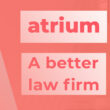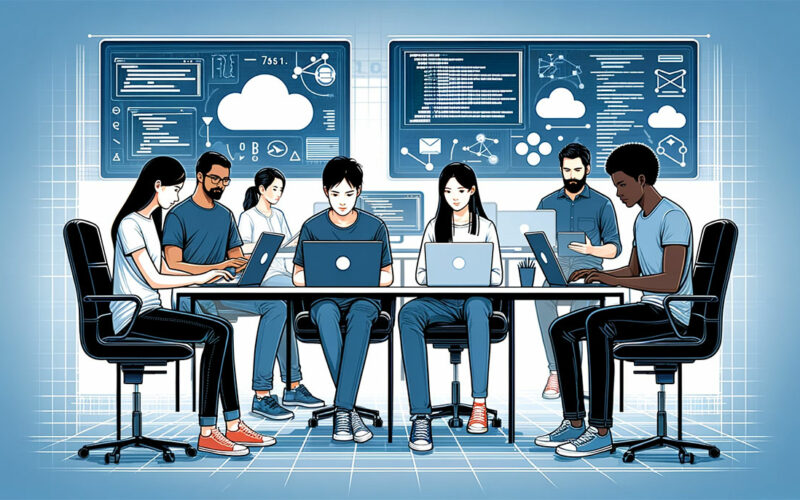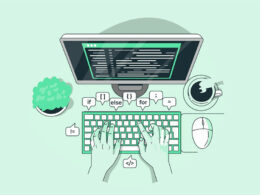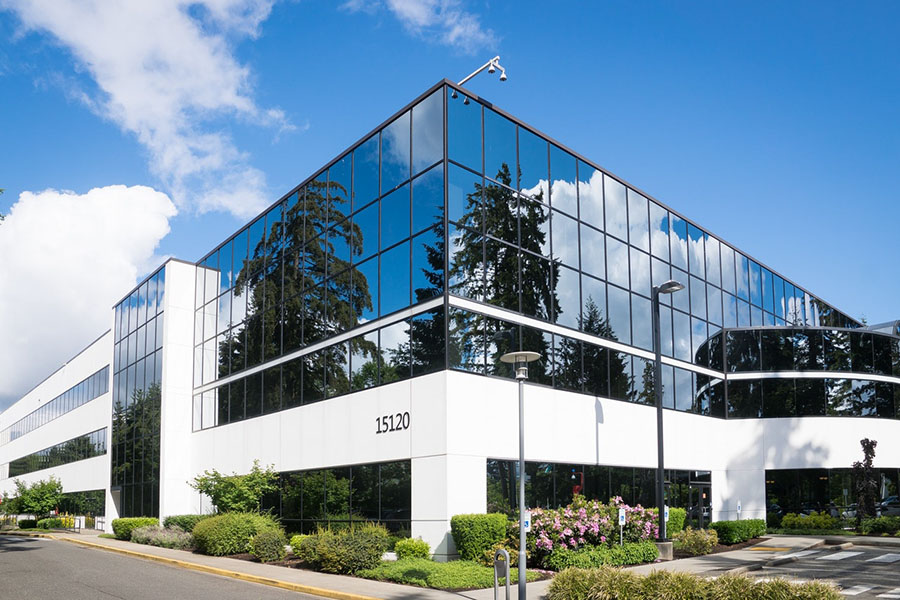If you’re stepping into the world of tech, SaaS development is something you’ve got to get a handle on. Let’s break it down, shall we?
SaaS stands for Software as a Service. Think of it like Netflix, but for software. Instead of buying a DVD (remember those?) or downloading a massive file, you just hop online and access the software right from your browser. No fuss, no muss.
Now, imagine a business without emails. Wild, right? It’s the same for many companies without SaaS nowadays. The importance? It’s a game-changer. Businesses get to use software without the headache of maintaining it. Plus, the cloud-based application aspect means you can access it anywhere, anytime. Handy, right?
So, how did we get here? Well, back in the day, you’d buy a software, install it with a CD-ROM (oh, memories!), and pray your computer didn’t crash. If there were updates, you’d have to get the newer version, sometimes by buying it all over again. But then, ta-da, cloud computing entered the scene.
SaaS solutions have been on a rollercoaster ride, going only upwards. It’s like watching your favorite indie band become mainstream. With the internet taking over, businesses realized that software on demand was the future. It’s more than just a trend; it’s shaping the very way we think about and use software in modern business.
Key takeaways
- SaaS Product Nature: SaaS (Software as a Service) is a cloud-based software delivery method that operates entirely online, typically using a subscription-based pricing model. This approach allows for instant access, automatic updates, and eliminates the need for installation, changing the traditional software licensing model.
- Development and Distribution: SaaS development optimizes customer resources through its unique cloud-based development and distribution model, offering unique features and instant maintenance capabilities that traditional software formats lack.
- Advantages of SaaS Development: SaaS offers several benefits, including lower initial costs for users, steady income for developers through subscriptions, trial periods for software testing, increased scalability, accessibility, and the ability to update products post-purchase, attracting a larger customer base.
- Initial Steps in SaaS Development: Building a SaaS application involves critical initial steps like thorough market, competitor, and customer research, focusing on either specific industries (vertical) or software categories (horizontal). This research aids in defining the target audience and deciding on the product’s key features.
Key Concepts and Terminologies
What is SaaS Development?
SaaS development stands for “Software as a Service” development. It involves creating and delivering software applications over the internet on a subscription basis.
Unlike traditional software, SaaS applications are hosted in the cloud, allowing users to access them from anywhere with an internet connection.
SaaS development simplifies software deployment, maintenance, and updates, making it a cost-effective and flexible solution for businesses of all sizes.
SaaS vs. Traditional Software Deployment
Picture this: You’ve got a shiny toy, but every time you want to play with it, you have to rebuild it. That’s kinda how traditional software worked.
On the other hand, with SaaS, it’s like having a toy that upgrades itself while you’re sleeping. No assembly required.
Cloud software means everything’s online. No need to worry about whether your PC or Mac can handle it, or about losing everything if your hard drive gives up the ghost.
SaaS vs. Web Applications
Okay, so if SaaS is all online, how’s it different from a web application? Great question!
Think of a web app like a tool – it does one thing and does it well. But SaaS? It’s like an entire toolbox. It offers more features and often comes with added benefits like automatic updates, customer support, and integration capabilities.
Understanding SaaS Architecture
This is where the cool nerdy stuff comes in. Hang tight!
Multi-tenant vs. Single-tenant
Alright, let’s imagine an apartment building. If SaaS architecture were that building, multi-tenant would mean several companies share the same space (or software instance).
They have their own private section, but the infrastructure? Shared. On the flip side, single-tenant is like everyone getting their own building. More privacy, but also more maintenance.
Horizontal vs. Vertical SaaS
So, horizontal SaaS is like a one-size-fits-all t-shirt. It works for a wide range of businesses, regardless of their industry.
Think tools that handle accounting or email marketing. Meanwhile, vertical SaaS is tailored, like a suit.
It’s made specifically for one type of industry, like software just for dentists or just for artists.
Benefits of SaaS Development
Let me paint you a picture. Imagine you’ve got this super gadget in your pocket. It does everything – cooks, cleans, entertains, even ties your shoelaces! Sounds rad, right?
Now, if software was this gadget, SaaS development would be the elite version. Let’s dive into why:
Cost-effectiveness and ROI
So, you’ve got this killer idea for a business. Maybe it’s the next unicorn, who knows? But there’s a catch: software’s expensive.
Enter, Software as a Service with its cloud software vibes and subscription-based pricing model, it’s kinder to your wallet. No need for massive upfront costs, just a subscription. Oh, and ROI? Think of it as the cool bonus track on your favorite album.
Scalability and Flexibility
Remember when you outgrew your favorite sneakers as a kid? With traditional software, that’s the drill.
But when it comes to designing a scalable SaaS, it’s like having sneakers that grow with you. So, whether your business is a tiny toddler or a towering giant, SaaS scales. And if you fancy a color change? Boom, flexibility at its best!
Accessibility and Remote Access
Ever had those days where you just can’t with the office? We’ve all been there. With SaaS, you’re not chained.
Beach, cafe, bed, you name it! All you need is the internet and voila – work enters chill mode. Remote software access is the unsung hero of our generation.
Automatic Updates and Maintenance
Updates? We all dread them. But what if I told you, in the SaaS realm, your software gets sneaky midnight makeovers?
No more “Have you tried turning it off and on?” Just seamless, behind-the-scenes, automatic updates. No fuss, always in vogue!
Enhanced Collaboration and Integration Capabilities
Imagine a world where all your gadgets talk to each other. Your phone tells your oven your dinner preference. Magic, huh?
That’s SaaS for businesses. Tools don’t just coexist; they collaborate. And the integration capabilities? They’re like secret handshakes between software. Epic!
SaaS Development Process
Alright, now onto the secret sauce behind the magic of SaaS development. Hold onto your hats!
Idea Generation and Validation
Every masterpiece starts with an idea. Maybe it’s a scribble on a napkin or a 2am brainwave. But not every idea is gold.
So, first things first, validate! Throw it at the wall, see if it sticks. Get feedback, rinse, repeat. Only the worthy survive.
UX/UI Design Principles
Ever used an app and felt like it just gets you? That’s the magic of UX/UI. It’s the art of making software feel like a warm hug.
It’s about empathy, understanding, and, honestly, a sprinkle of mind-reading. Smooth flows, catchy colors, and buttons that beckon – that’s the dream.
Development, Testing, and Deployment
Now, the real deal. Turning dreams into reality. Code becomes the bridge. But wait! Before the grand reveal, it’s SaaS testing time.
Imagine a dress rehearsal but for software. Once everything’s A-OK, and the bugs have left the building, it’s showtime! Deploy and let the world see the masterpiece.
Product Launch, Maintenance, and Scaling
The party doesn’t stop at launch. Nope. It’s about keeping the software’s swag on point. Regular check-ups, tweaks, and jazzing up with new features.
And if the crowd wants more? Scale it up. Make it bigger, better, and bolder. Remember, in the world of SaaS development, the sky’s just the beginning!
Technical Considerations in SaaS Development
Oh boy, if SaaS development was a movie, this section would be the gripping middle part where all the action goes down.
Database Management and Data Ownership
Imagine your room, but with every piece of information about your life in neatly stacked boxes. That’s a database. But who owns these boxes? You, right?
Same with SaaS. Data is precious. But here’s the thing, it needs to be neatly arranged, quick to fetch, and of course, belonging to the rightful owner. So, a solid database strategy? Non-negotiable!
Performance Optimization and Load Balancing
Have you ever hosted a party and had too many guests in one corner of your living room? Chaos, right?
Now, think of your software as that room. With load balancing, you make sure the party vibes stay alive. No crashing. No sluggishness. Just smooth sailing.
Security Measures and Compliance
Okay, let’s get real. Ever had a pesky younger sibling snoop into your stuff? Now, what if your stuff is online and super private?
Encryption and Multi-factor Authentication
It’s like having a secret code for your diary. Only you can open it.
Every message, data, or, well, anything, gets jumbled up (that’s encryption) unless you have the key. And multi-factor? Think of it as multiple secret handshakes before you’re in.
Data Privacy Regulations (e.g., GDPR, CCPA)
Now, there are rules to this game. Think of GDPR and CCPA as the elder siblings, ensuring no one’s messing around with your data. Complying is not just cool; it’s mandatory.
Integration with Third-party Software and Services
Ever tried connecting two LEGO sets? That’s kinda what integrating software feels like. Your SaaS masterpiece can shake hands with other cool tools. It’s all about playing well with others.
Mobile and Responsive Design
You love scrolling on your phone during the bus ride home, right? So do users! Making sure your SaaS shines on all devices, big or small, is like dressing up for every occasion. Be it a tablet party or a smartphone gala, you gotta look your best!
Non-technical Aspects of SaaS Development
Away from the nuts and bolts, let’s drift into the softer shades of SaaS development.
Market Fit and Target Audience Analysis
Think of this as setting up your Spotify playlist. Who are you making it for? What vibes are they into? It’s about finding out who’d jam to your beats, and then curating the playlist, uh, I mean software, to perfection.
And don’t forget, part of that perfection involves optimizing for SaaS SEO, so your product can be easily discovered and loved by your target audience.
Client Acquisition and Retention Strategies
Okay, imagine you’ve set up the coolest lemonade stand. How do you get people to sip? And more importantly, come back for more?
With some catchy marketing or sales and killer features. For SaaS, it’s catchy marketing or sales and killer features. In fact, SaaS marketing stats show that a well-planned marketing strategy can significantly impact client acquisition and retention.
Subscription Models and Pricing Strategies
Imagine going to a buffet. You pay for what you eat, right? SaaS is similar, but virtually. How much users pay can vary. Monthly? Yearly? Tiered? Unlimited refills? It’s all about setting the right price for the right sip.
Customer Support and Service Excellence
Ever been to a cafe where the barista remembers your order? Feels special, doesn’t it? Same goes for SaaS.
Users might hit bumps, have questions, or just want to chat. Being there, with a smile (or a helpful email), makes all the difference.
Continuous Feedback and Iterative Enhancement
Picture this: You’re painting. You step back, look, tweak, look again. It’s a dance.
For SaaS development, it’s about constantly tuning in, listening, and jazzing up the masterpiece. Iterating, evolving, glowing up!
Challenges in SaaS Development
Let’s chat about the flip side of SaaS development. It’s like setting up the most epic party, but some party crashers always try to sneak in. Let’s break it down!
Addressing Customization Needs
Ever tried ordering a burger and wanted everything just right? Extra pickles, no onions, a dash of sauce, but not too much?
That’s how SaaS users feel. They want it tailored, snazzy, and unique. But, man, striking that balance between too little and too much? It’s a culinary art, if you ask me.
Ensuring High Availability and Uptime
Imagine a roller coaster. Fun, right? But only if it’s running! If it’s always “under maintenance”, what’s the point? SaaS development is just that. If your digital roller coaster is always down, who’s gonna ride it?
Data Security and Breach Prevention
So, you’ve got this secret recipe. Grandma’s. It’s tucked away safely. But what if someone sneaks a peek? Not on our watch! In the SaaS world, this recipe is data, and keeping it from nosy Nellies is mission numero uno.
Navigating Complex Regulatory Landscapes
Picture this: you’re hiking, and there’s this huge signboard with DOs and DON’Ts. Some make sense, some… not so much. But you gotta follow ’em. It’s the same with SaaS. The signboards? They’re laws and regulations, making sure everyone plays nice.
Building the Right SaaS Development Team
Alright, cool cats, let’s talk about the backstage heroes of the SaaS development concert. The band members, the techies, the artists – it’s all about harmony!
Roles and Responsibilities
Imagine a band. There’s the lead singer, the drummer, the guitarist. Each doing their thing, but together? Fireworks! SaaS development isn’t much different. You’ve got the coder (our modern-day rockstar), the designer (the artist with a flair), and so many more. Everyone’s got their gig, but it’s the ensemble that makes the magic.
Importance of a Service-oriented Mindset
Have you been to a restaurant where the waiter treats you like royalty? Feels good, right? The essence is to serve and serve with a smile. In the world of SaaS, it’s not just about building. It’s about building with the user in mind, like crafting a meal fit for kings and queens.
Collaborative Approach and Team Dynamics
Okay, ever watched a group dance? The synchronicity, the rhythm, the unspoken understanding? That’s the secret sauce in SaaS development. It’s not about the solo performance. It’s the group jam, the brainstorming sessions, the coffee spills, and the “Aha!” moments. Everyone vibing together, pushing boundaries, and creating symphony. That’s the dream team right there!
Future Trends and Innovations in SaaS
Okay, folks, time to put on those futuristic glasses and take a peep into what’s bubbling in the cauldron of SaaS development.
AI and Machine Learning Integration
You know that feeling when Netflix just knows what you wanna watch next? That’s AI and Machine Learning doing their thing. And guess what?
They’re crashing the SaaS development party big time. It’s like mixing pop rocks and cola – a fizzing explosion of awesomeness. We’re talking about self-evolving software, auto data-crunching, and yeah, maybe even a digital buddy to chat with during those lonely work nights.
Evolving Customer Expectations
Remember the good old days when loading a page for 5 minutes was no biggie? Now? If it ain’t instant, it’s antique.
And with the cloud infrastructure and application scalability talk going around, the bar’s just rocketing to the stratosphere. Every day, there’s a new ‘must-have’ or a ‘can’t live without’ feature. The challenge? Keeping up without tripping!
Globalization and Localization Strategies
Alright, think about your favorite food joint. Now imagine they open up in every city, but with a local twist in each spot. Like sushi-burritos in Tokyo and LA.
That’s SaaS development in a global world. Serving everyone, everywhere, but with that homely touch. It’s like being a global citizen but without losing the local accent. Cool, right?
FAQ On Saas Development
What is SaaS development exactly?
SaaS development is like crafting these nifty online tools (think apps) that live on the cloud. No downloads, no fuss.
Just hop onto the web, and you’re good to go. It’s the wizardry behind subscription services like Netflix, but for, well, pretty much anything.
Why’s everyone raving about cloud infrastructure in SaaS?
Ah, the cloud! It’s not just where our heads are; it’s where all the cool SaaS stuff hangs out. Instead of having software chained to one computer, cloud infrastructure lets you access it from any device.
It’s like having a digital locker room, with your software waiting, ready for action. A game-changer? Heck yeah!
Is there a difference between SaaS and traditional software?
Totally! Imagine buying a DVD vs. streaming on Netflix. Traditional software? That’s your DVD. It’s physical, tangible, and once you’ve got it, it’s not gonna update itself. SaaS, on the other hand, is that awesome streaming service. Constantly evolving, no storage woes, and always giving you the freshest content.
How secure is SaaS?
The big question! With all the cybersecurity buzz, it’s like asking if a vault’s safe. Good SaaS follows solid security protocols, think encryption and multi-factor authentication.
Of course, there’s always some risk, just like with anything digital. But top-tier SaaS platforms? They’re like fortresses. Still, always good to check their creds!
What’s the deal with multi-tenant and single-tenant in SaaS?
Great catch! So, imagine an apartment building. Multi-tenant is when multiple businesses share the same SaaS environment, like tenants in a building. Single-tenant, meanwhile, is like renting the whole darn building for yourself. More customizable, but a bit pricier. It’s all about what fits the bill for you.
Why choose SaaS over traditional deployments?
The world’s zippy fast now. With SaaS development, you’re always on the latest version, thanks to those automatic updates. Plus, the pay-as-you-go model? Super budget-friendly.
And remember, it’s everywhere you are, thanks to that cloud magic. Traditional deployments, while comfy, can feel like old-school VHS in a Netflix age.
How often does SaaS get updated?
One of the joys of application scalability in SaaS! It gets tweaks, updates, and makeovers way more frequently than traditional software. Some even get nightly touch-ups. Why? It lives online! No need to mail out CDs or make users download patches. It’s like your app’s got its personal glam squad.
Can I customize my SaaS application?
For sure! SaaS development ain’t a one-size-fits-all gig. While some come with set features, many give you the freedom to add some jazz. Think of it like a burger joint. You start with the basic patty and bun, then toss on your fave toppings. Just, y’know, digitally.
Is SaaS only for big businesses?
Nah, that’s old school thinking! From mighty giants to the little startup that could, SaaS solutions cater to all. With its scalability and flexible pricing models, even a one-person show can harness the power of top-tier software. It’s like giving everyone, big or small, the keys to the digital kingdom.
How does pricing work for SaaS?
Ah, the golden query! Most SaaS platforms use subscription models. You pay for what you use, often monthly or annually. Some might have a free tier (with limited bells and whistles) and then premium ones that unlock more features. Kinda like a buffet – you pick what you’re hungry for, and that decides the bill.
Conclusion On Saas Development
Alright, wind-back moment! If this digital era were a movie, SaaS development would be the superhero. Rescuing businesses from towering piles of software CDs, making sure everyone gets the golden ticket to the digital carnival. It’s not just about building software. Nah, it’s about crafting experiences, igniting revolutions, and sprinkling a bit of that digital fairy dust.
To wrap this up, imagine SaaS as this mega theme park. The rides keep changing, new ones pop up, and some oldies get a shiny makeover. Stagnant? Nah, not in the dictionary. To truly enjoy the ride, one’s gotta adapt, learn, and maybe scream in excitement (or fear) a bit. Keep those eyes wide, ears open, and brain ticking. Because in the world of SaaS development, every day’s a rollercoaster.
If you enjoyed reading this article on SaaS development, you should check out this one about SaaS metrics.
We also wrote about a few related subjects like SaaS pricing models, SaaS vs PaaS, SaaS startups and go to market strategy.
- Crafting the Perfect Pitch to Secure Investors for Your Mobile App - April 18, 2024
- 5 Ways to Incorporate AI Into Your Project Management Workflow - April 18, 2024
- The Role of AI in Personalizing Employee Training - April 18, 2024









